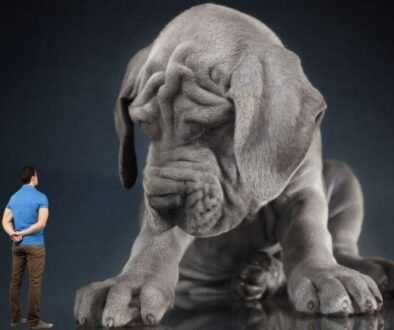Types of Golden Retrievers: A Complete Guide to These Lovable Pups
The Allure of Golden Retrievers
What makes Golden Retrievers so irresistible? Is it their gorgeous golden coats, their loyal personalities, or the way they seem to smile whenever you walk into the room? Golden Retrievers have long been one of America’s favorite dog breeds—and for good reason. But did you know there are actually different types of Golden Retrievers? Yep, not all Goldens are created equal, and understanding these differences might just help you find your perfect furry match.
In this guide, we’ll explore the three main types of Golden Retrievers, break down their differences, and help you decide which one suits your lifestyle. Let’s unravel the golden mystery together!
Are There Really Different Types of Golden Retrievers?
Yes, there are! While the Golden Retriever breed standard remains consistent, slight variations have emerged based on breeding practices in different countries. These differences aren’t just about looks—they also include temperament, size, and coat characteristics.
Fun Fact: The Golden Retriever originated in Scotland during the 19th century, thanks to the efforts of Lord Tweedmouth, who wanted a loyal and skilled hunting companion. From there, the breed spread worldwide, evolving into distinct subtypes.
The Three Main Types of Golden Retrievers
American Golden Retriever

Overview: The American Golden Retriever is the most common type in the United States and is what most people picture when they think of this breed. They’re known for their athletic build, long coats, and friendly disposition.
- Appearance:
- Medium to dark golden coat
- Slender and athletic frame
- Feathered fur on legs, chest, and tail
- Temperament:
- Outgoing and energetic
- Loves outdoor activities and games
- Excellent with kids and families
- Fun Fact: They’re often the stars of movies and commercials!
English Cream Golden Retriever

Overview: Sometimes called the “White Retriever,” the English Cream Golden Retriever is known for its lighter coat and calmer demeanor. This subtype is bred to meet European standards.
- Appearance:
- Cream or pale golden coat
- Stockier build with a blockier head
- Shorter and straighter coat compared to their American cousins
- Temperament:
- Gentle and laid-back
- Excellent therapy and emotional support dogs
- Still playful but less hyper than American Goldens
- Fun Fact: Despite their luxurious pale coats, English Creams are no rarer than other Golden Retriever types.
While English Cream Golden Retrievers are sometimes nicknamed the ‘White Retriever’ due to their pale coats, it’s important to note that pure white coats are not part of the breed standard. In fact, overly light coats may indicate mixed breeding or deviation from breed guidelines. Responsible breeders focus on health, temperament, and adherence to breed standards, so always ensure you’re sourcing your pup from a trusted breeder.
Canadian Golden Retriever

Overview: The Canadian Golden Retriever is less well-known but equally lovable. This type is distinguished by its thinner coat and taller frame.
- Appearance:
- Coat ranges from light to dark gold
- Less feathering compared to American and English types
- Taller and leaner build
- Temperament:
- Active and adventurous
- Thrives in outdoor settings
- Slightly more independent than other types
- Fun Fact: Although Canadian Golden Retrievers are noted for their thinner coats, this doesn’t necessarily make them better suited for cold climates. In fact, thicker coats typically provide better insulation in freezing temperatures. However, thinner coats can make grooming more manageable in snowy or icy conditions, as there’s less feathering to collect ice or debris. Keep in mind that all Golden Retrievers, regardless of type, benefit from extra care in extreme weather
Key Differences Between the Types
Here’s a quick breakdown of what sets the three types of Golden Retrievers apart:
- Coat Color & Texture:
- American: Medium to dark golden; long, wavy coats.
- English Cream: Pale cream to light golden; shorter, straighter coats.
- Canadian: Light to dark golden; thinner coats with less feathering.
- Body Structure:
- American: Slender and athletic.
- English Cream: Stockier with a broader head.
- Canadian: Taller and leaner.
- Temperament:
- American: High-energy and playful.
- English Cream: Gentle and calm, ideal for therapy work.
- Canadian: Active and adventurous with a hint of independence.
Practical Benefits of Understanding the Differences
Why do these differences matter? Here are some practical ways the type of Golden Retriever you choose could impact your daily life:
- Coat Type: Longer, feathered coats (like those on American Goldens) may require more frequent grooming to prevent matting, while thinner coats (like those on Canadian Goldens) are easier to maintain.
- Energy Levels: If you have an active lifestyle, a high-energy American or Canadian Golden could be your perfect match. For a quieter household, the laid-back English Cream might be a better fit.
- Climate Suitability: Living in a colder region? A Canadian Golden’s adaptability might work better. Warmer climates? An English Cream’s shorter coat could mean less shedding and maintenance.
- Family Dynamics: Have young kids? While all Golden Retrievers are great family dogs, the gentle demeanor of English Creams makes them especially popular for households with toddlers or older adults.
Which Type Is Right for You?
When deciding which type of Golden Retriever is right for you, consider:
- Your Lifestyle:
- Active? The American or Canadian Golden might be your perfect adventure buddy.
- Relaxed? The English Cream’s calm demeanor might suit you better.
- Climate:
- Live in a colder area? A Canadian Golden’s thinner coat will adapt well.
- Prefer milder weather? Any type will do, but the American’s longer coat might need extra care.
- Family Needs:
- Have young kids? Any Golden Retriever will be a wonderful family dog, but English Creams are especially gentle.
Take the Quiz: Which Golden Retriever Type Is Right for You?
Not sure which type suits you best? Answer these quick questions to find your perfect match!
- How active are you?
- A) Very active—I love outdoor adventures!
- B) Moderately active—I enjoy walks and occasional playtime.
- C) Relaxed—I prefer lounging with my furry friend.
- Do you have young kids or other pets?
- A) No, it’s just me (or me and my partner).
- B) Yes, I have kids or other pets who need a gentle companion.
- C) I’m planning to expand my family soon!
- What climate do you live in?
- A) Cold winters and mild summers.
- B) Mild to warm year-round.
- C) A mix of everything—unpredictable weather.
Results:
- Mostly A’s: You’re an adventurer! A Canadian Golden Retriever is a great match for your active lifestyle.
- Mostly B’s: You’re family-oriented. The gentle and calm English Cream Golden Retriever is perfect for you.
- Mostly C’s: You’re versatile! An American Golden Retriever balances energy and affection, making them a great fit.
Common Misconceptions About Golden Retrievers
- English Creams Are a Separate Breed
- Nope! All Golden Retrievers are part of the same breed.
- English Creams Are Healthier
- While some breeders claim English Creams have fewer health issues, all Golden Retrievers are prone to similar concerns like hip dysplasia and cancer.
- Canadian Goldens Are Rare
- While less common in the U.S., they’re widely recognized in Canada.
Health Considerations for Golden Retrievers
Golden Retrievers are a generally healthy breed, but they are prone to some common health concerns across all types:
- Hip and Elbow Dysplasia: Developmental joint issues that can cause discomfort or arthritis later in life. Regular exercise and maintaining a healthy weight can reduce the risk.
- Cancer: Golden Retrievers have a higher risk of certain cancers, such as hemangiosarcoma and lymphoma. According to the Golden Retriever Lifetime Study, over 60% of Goldens may be affected by cancer. Early detection through regular vet visits is key.
- Heart Issues: Subvalvular aortic stenosis (SAS) is a heart condition that can affect the breed.
- Skin Allergies: Goldens often develop skin allergies or hot spots. Regular grooming and a proper diet can help manage these.
- Eye Disorders: Conditions like cataracts and progressive retinal atrophy (PRA) are also common.
Managing Their Health:
Proactive care is essential for keeping your Golden Retriever healthy:
- Schedule annual vet checkups and screenings for joint and heart health.
- Feed a high-quality diet tailored to their needs.
- Keep up with grooming routines to monitor skin and coat health.
FAQs About Golden Retrievers
Q: Do Golden Retrievers shed a lot?
A: Yes, Golden Retrievers are notorious shedders, especially during seasonal changes. Regular grooming can help manage the fur frenzy.
Q: Are English Cream Golden Retrievers more expensive?
A: Sometimes, but the price usually depends on the breeder and the dog’s pedigree rather than the specific type.
Q: Which type of Golden Retriever is best for first-time dog owners?
A: All Golden Retrievers are great for beginners! However, English Creams are often noted for their calmer temperament, which can be a bonus for new owners.
Q: Are English Cream Golden Retrievers healthier than other types?
A: Not necessarily. There’s no scientific evidence proving English Creams are healthier than American or Canadian Goldens. A dog’s health depends on responsible breeding and proper care. The Morris Animal Foundation’s 2013 Golden Retriever Lifetime Study emphasizes the importance of regular health screenings and good care to reduce health risks across all types.
Final Thoughts
Golden Retrievers, no matter the type, are a wonderful addition to any family. Whether you prefer the athletic American, the gentle English Cream, or the adventurous Canadian, these lovable pups bring joy, loyalty, and plenty of tail wags into your life. Ready to welcome a Golden into your home? Take the time to understand their needs and personalities to ensure a match made in doggy heaven!



